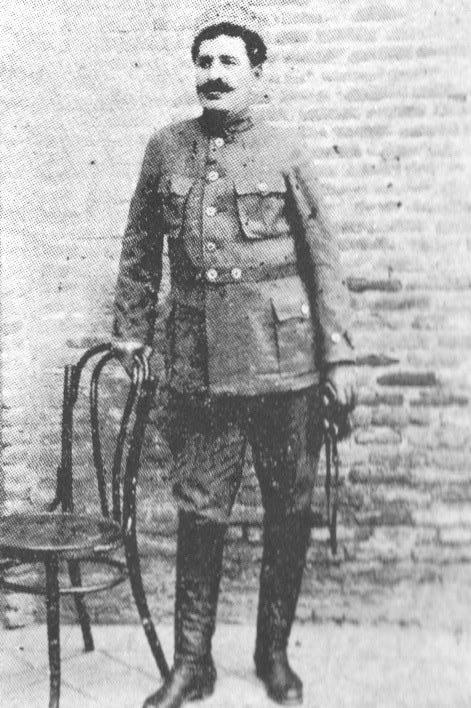General Sumpad, also known by the pseudonym of Makhluto, was one of the figures of the fedayee movement and then had an active participation in the events of 1914-1921.
His actual name was Sumpad Boroyan. He was born on August 28, 1875, in the neighborhood of St. Marine, in Mush. He graduated from the local monastery school. He entered the ranks of the Armenian Revolutionary Federation in 1900. He cooperated with famous freedom fighters like General Antranig and Hrayr, and liquidated one of the traitors who had betrayed Aghpiur Serop.
He participated in the battle of the Monastery of the Apostles (Mush) in 1901 with Antranig and the second rebellion of Sasun in 1904 with Antranig and Kevork Chavush. After its demise, he continued the fight against the Turkish troops in the plain of Mush and then in Aghtamar (July 1904) under Antranig’s command. Sumpad went afterwards to the Caucasus and participated in the Armeno-Turkish conflict of 1905-1906, leading the self-defense fights of Ghamarlu (Artashat). Afterwards, following a resolution of the ARF, he crossed into Iran and participated in the Iranian Constitutional Revolution of 1908-1912 , fighting against the counterrevolutionary forces in the region of Urmia.
He returned to normal life in Mush in 1912-1914, where he got married. However, his plans for a peaceful living were disrupted by World War I. He went to the Caucasus, where he became adjutant of Antranig in the first battalion of volunteers. He participated in the battle of Dilman (April 1915), the liberation of Bitlis (February 1916), and many other clashes.
In May 1917, during the first congress of Western Armenians in Tiflis, Sumpad was elected member of the National Council of Western Armenians. Continuing his military activities, he was named commander of the Armenian regiment active in Alashkert in the summer of 1917. In 1918 he was part of Antranig’s striking unit and fought in Jalaloghli and Erzerum (February-March 1918), and then participated in the crucial battle of Gharakilise (May 1918). Afterwards, he crossed Eastern Armenia from northeast to southwest with the unit and participated in the occupation of the bridge of Julfa and Khoy.
In July 1918, Antranig and Sumpad went to Zangezur, participating in the self-defense combats against the Turko-Tatar attacks. In the fall, Sumpad parted ways with Antranig and returned to Yerevan, where he was elected member of the Western Armenian Executive Body.
In the summer of 1919, Sumpad headed the military unit of the Sasun fighters to the Eastern shore of Lake Sevan to defend the frontline region of the Republic of Armenia from the attacks of Azerbaijan. His unit then participated in the Armeno-Turkish war in the fall of 1920. After the fall of Alexandropol in November 1920, Sumpad, who had already earned the rank of general, retreated to the heights of Aragatz, where he was seriously wounded during combats and moved to Yerevan.
During the February 1921 revolt, Sumpad commanded the Armenian forces descending on Yerevan from Talin and Ashtarak. After collaborating with Garegin Nezhdeh in the region of Daralageaz, he crossed into Iran with the retreating forces. He settled for a while in Tabriz, where he remarried, and then moved to Egypt and the United States, where he established his residence in Fresno, California.
General Sumpad was not used to peaceful life. In 1933 he moved to Marseilles (France), where he cooperated with pro-Soviet elements. He published a volume of memoirs in 1936. During World War II, he participated in the French Resistance.
He returned to Armenia in 1947 during the repatriation. The veteran fedayee ended his days as a guard in the Komitas Park of Yerevan. He passed away on March 20, 1956. According to his last desire, he was buried in the courtyard of the church of St. Gayane, near Echmiadzin, besides Khent (Samson Ter-Boghosian), the hero of Raffi’s novel The Fool. A street of Yerevan has been named after General Sumpad. The novel of Khachik Dashtents The Call of the Peasants, posthumously published in 1979, was dedicated to his life.
